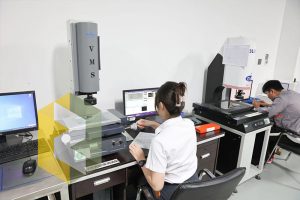For the hardware processing plant to have a lot of metal raw materials is the foundation, today ZenaTech precision hardware processing plant will share with users about the use of metal products materials, usually used for metal processing of various types of raw materials are what!
Metalmaking is the processing of metal parts, machinery, or components by shaping, cutting, and other similar processes. Common manufacturing techniques include welding, lathes, broaching, grinding, milling, and honing, although many metalworking workshops offer a variety of specialties that may be well suited to your specific needs.

Metalworking is an important process for almost all manufacturers, from automotive and electrical to food and beverage industries.
Over the years, the use of popular raw materials has led to the standardization of many manufactured parts and components, and it is helpful to know what materials are available and suitable for your unique application before starting a metal manufacturing process.
The following types of raw materials are stored by almost all metal suppliers:
Metal plates, fittings, castings, forming and foaming metals, hardware, sectional metals, welding wire, casting raw materials
The casting manufacturing process involves forcing liquid metal into a mold and allowing it to cool and harden into the desired shape. The high degree of custom flexibility makes casting ideal for applications requiring complex geometric shapes.
The raw materials used in the process usually include molten metals, but epoxy resins, concrete and clay are also used. Common metals used in the casting process include:
Aluminum, iron, steel, stainless steel, gold, silver, copper, magnesium, molding and foaming metal raw materials
Examples of expanded metal products
Expanded metal takes its name from its manufacturing process: cutting rough metal sheets in a press to form diamond-shaped holes surrounded by interconnected metal strands – shearing stretches (or expands) the metal to its final size.
The resulting grate-like aesthetic makes expanded metal ideal for outdoor furniture, fences, screen doors and all sorts of architectural details; It is also used as a mechanical guard to avoid contact with hot surfaces. Expanded metal raw materials are available in a variety of standard thicknesses and grating sizes.
Types of hardware raw materials
In metal manufacturing, hardware is defined as a variety of standardized parts or accessories used to make a product stronger, more powerful, or easier to manufacture. There are many categories of metalworking hardware, including the following basic raw materials:
Types of metal for corners, handles, locks, keys, latches, chains, wires, sections
Sectional metals consist of steel and are available in a variety of standardized shapes, most commonly used in the engineering and construction industries.
- Flat metal raw material: Flat metal is metal that has been pressed or rolled into very thin flat pieces. The thickness of a particular sheet metal piece varies widely, from less than a millimeter to several centimeters, and is measured with a gauge. Flat metal raw materials can be divided into three main categories:
- Foil or leaf metal: This is the thinnest type of flat metal
- Sheet metal: Sheet metal is the most common type of flat metal and is typically less than 6mm thick
- Sheet metal: Flat metal greater than 0.25 inches thick falls into this category
- Welding wire raw material: Welding wire consists of easily soldered metals that have been formed into thin, round rods. These raw materials are used to aid the welding process and are melted to help glue two or more metal sheets together. Welding wire is available in a variety of thicknesses and metal types, allowing customization during the welding process.
The benefits of using basic raw materials for metalworking
The usefulness of standardized raw materials for many metal manufacturing processes is clear. Raw materials with uniform shapes and sizes can reduce the amount of metal needed to make a product and greatly shorten production time. The result is lower manufacturing costs per unit.
The fact that ASTM requires different suppliers to use raw materials that are standardized within a narrow range also helps to establish compatibility and uniformity across the industry. In addition, it helps ensure the quality and structural integrity of the metal manufacturing process.





